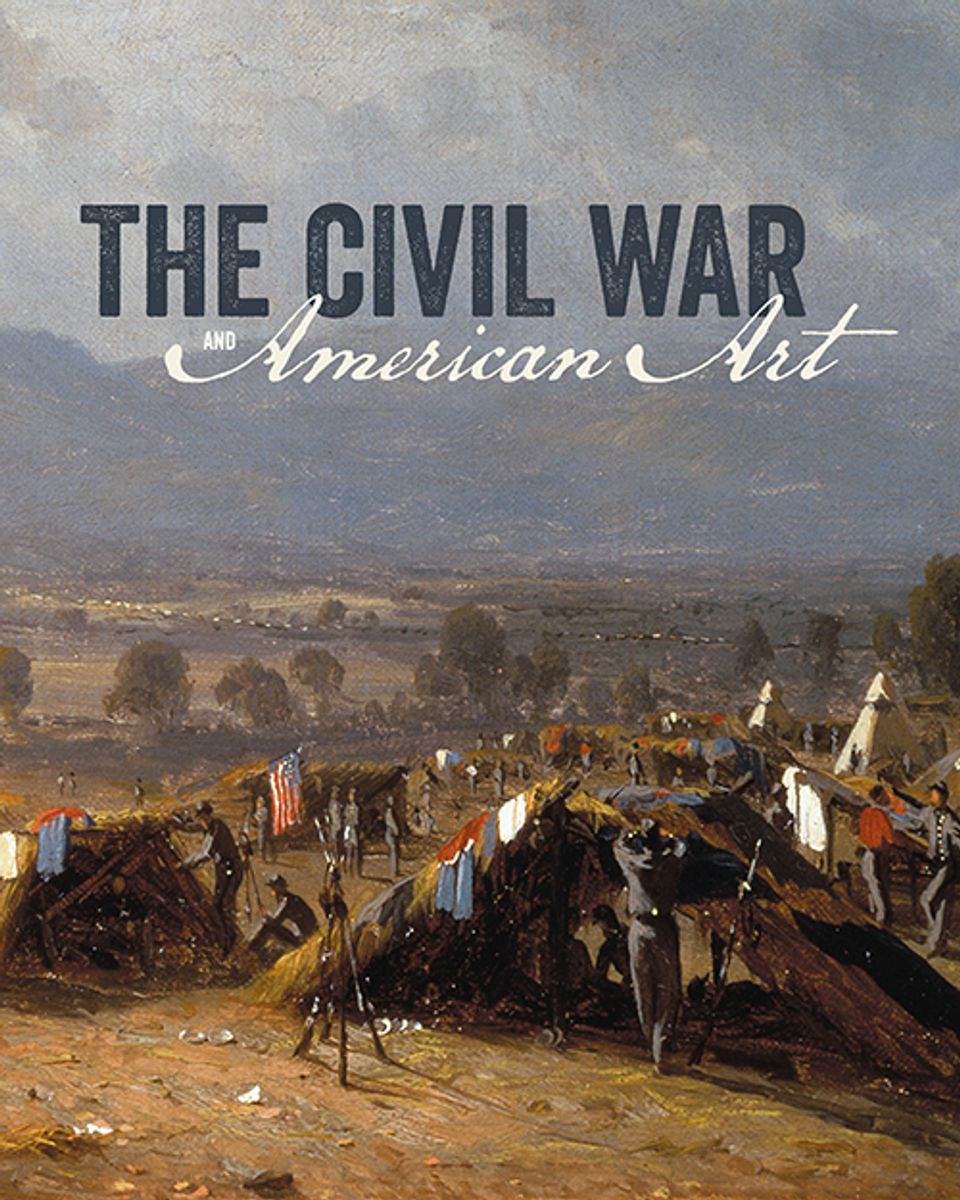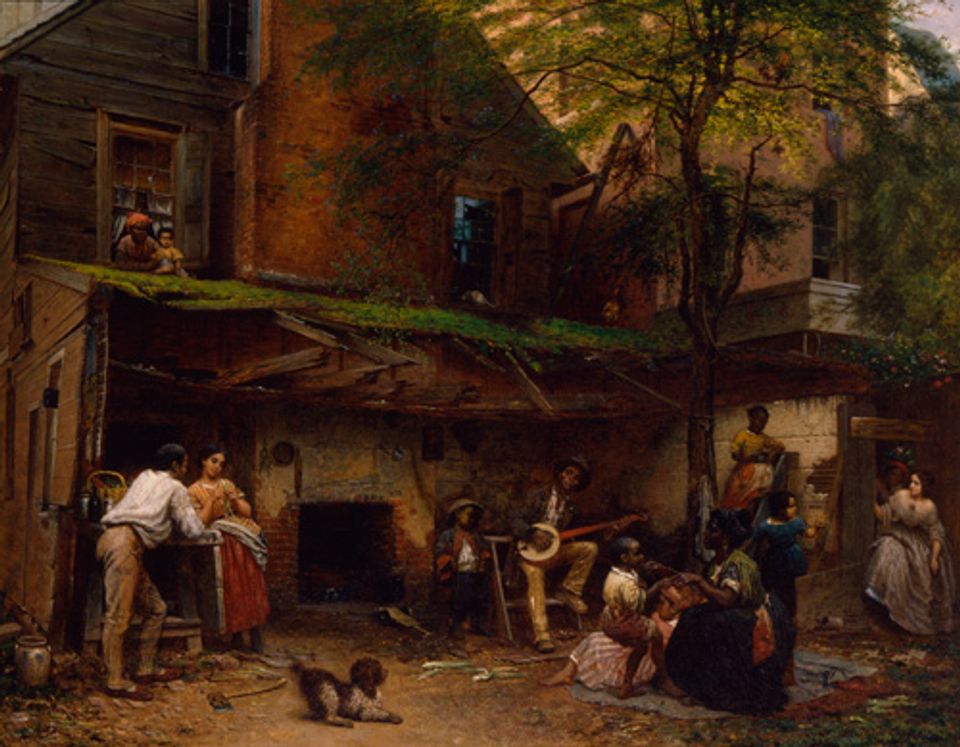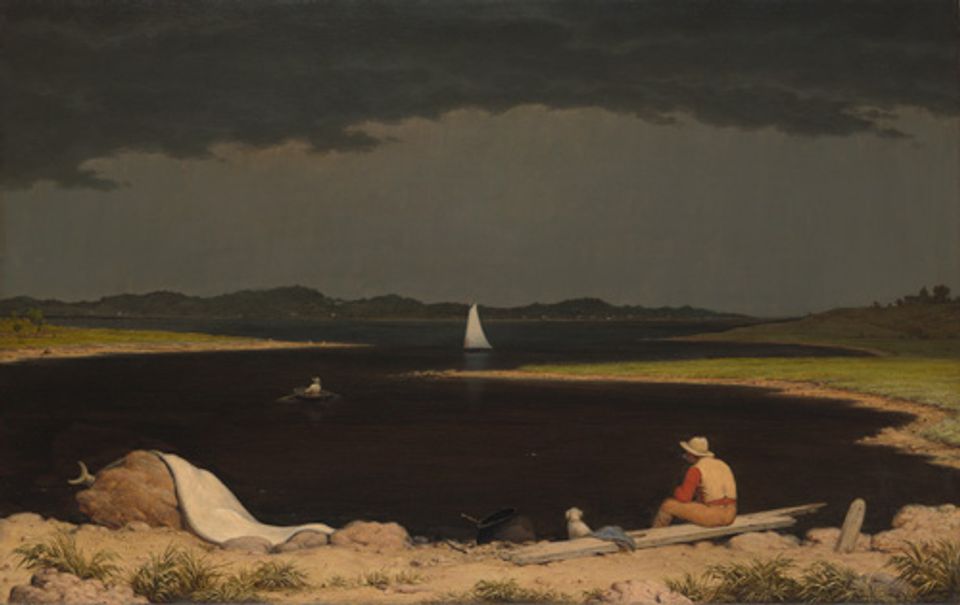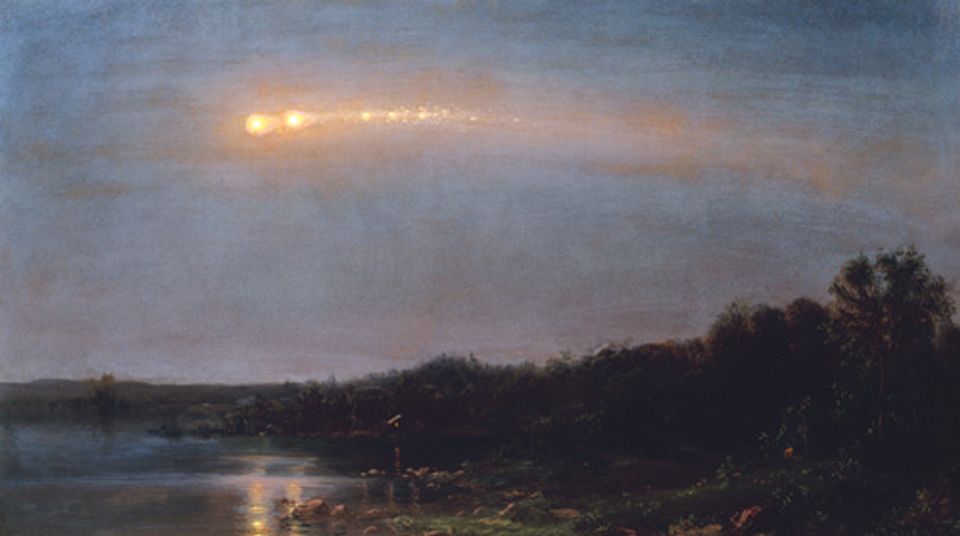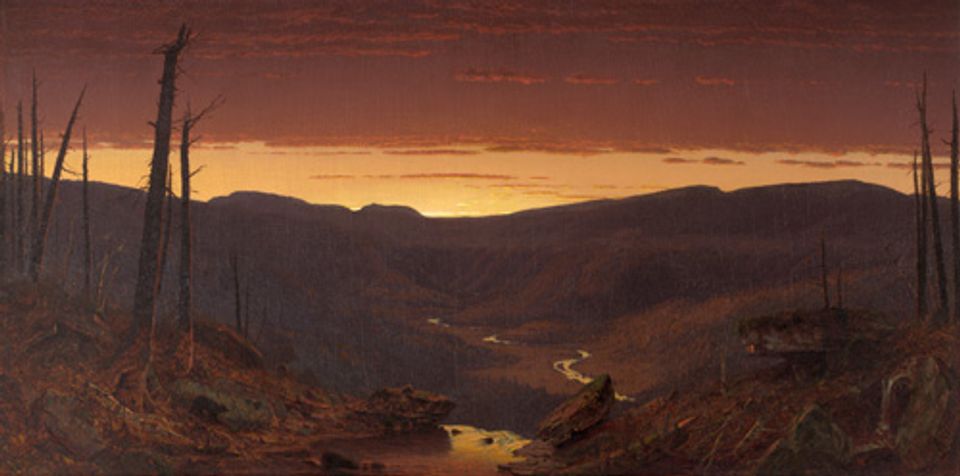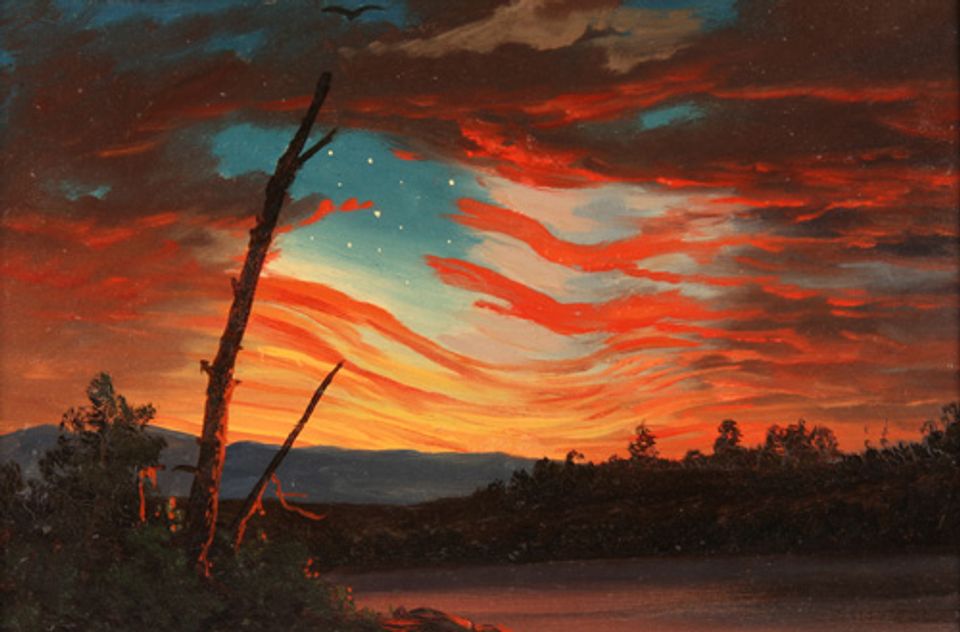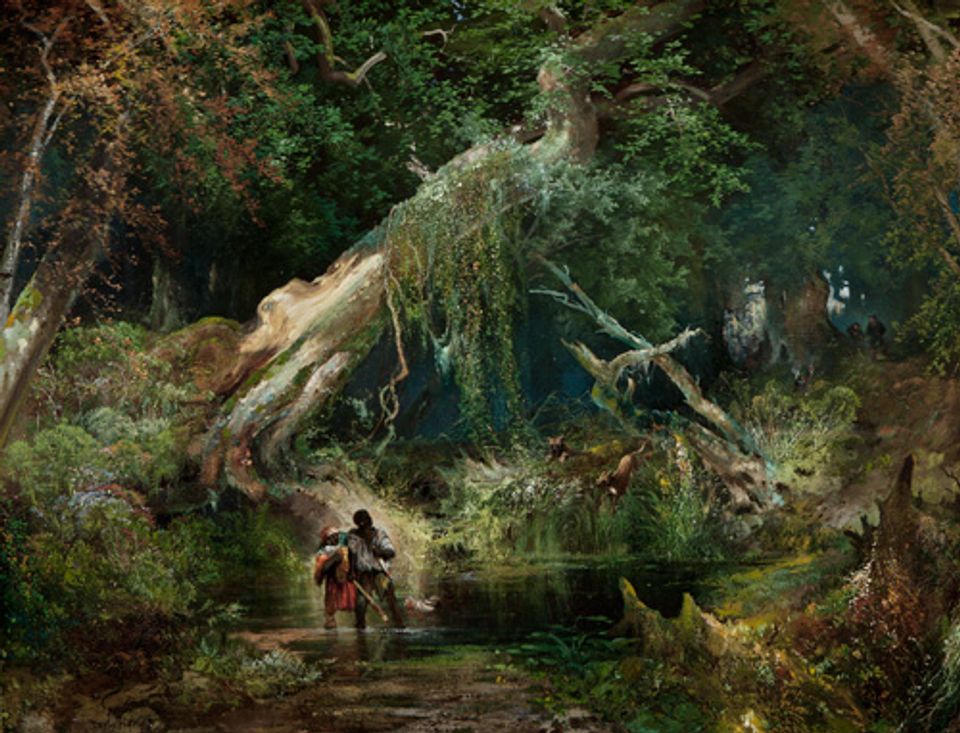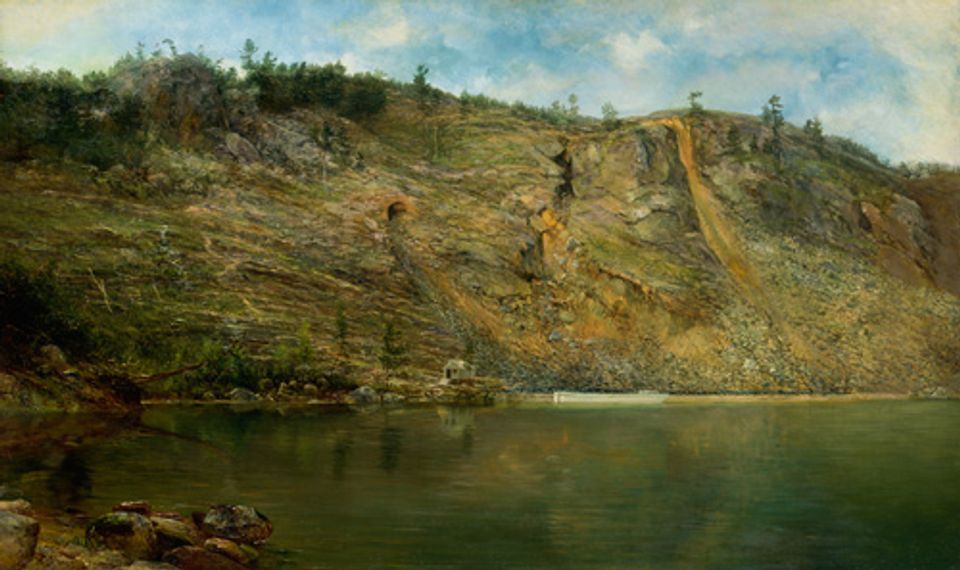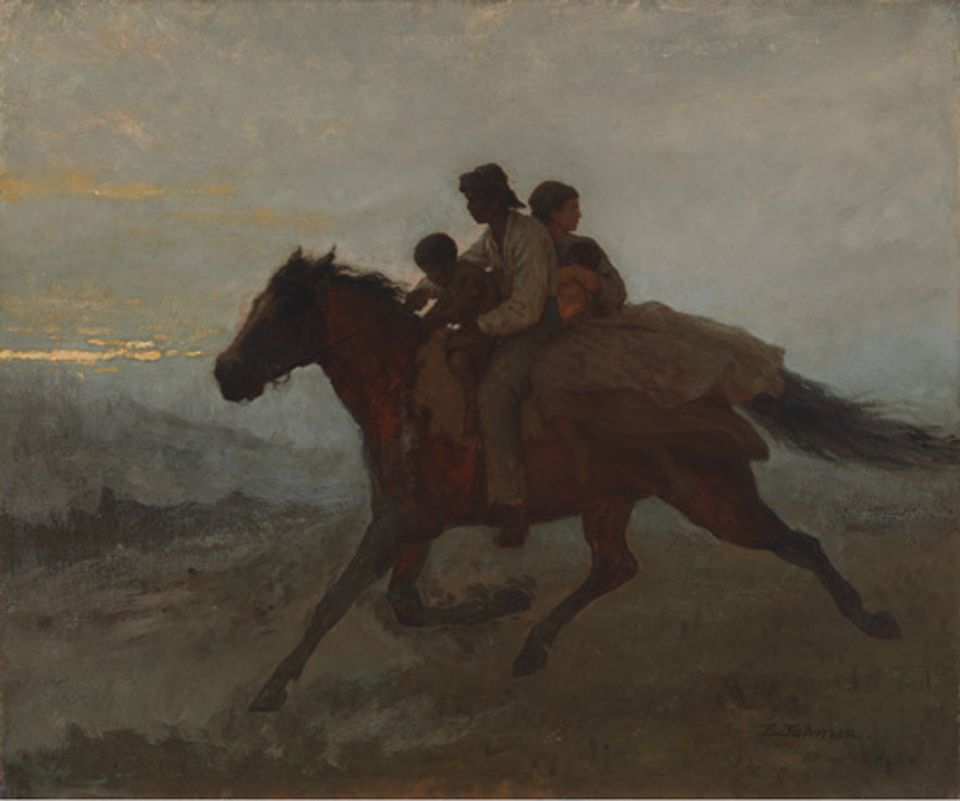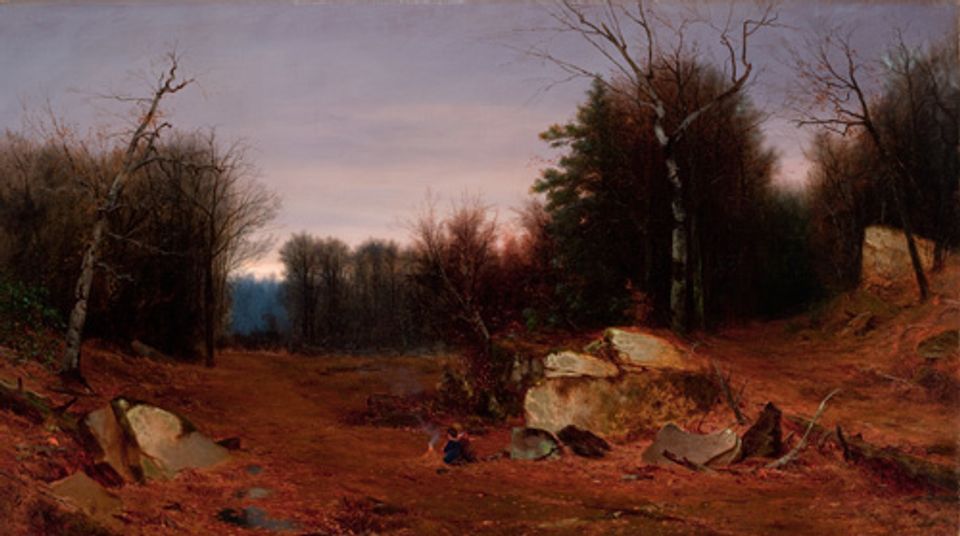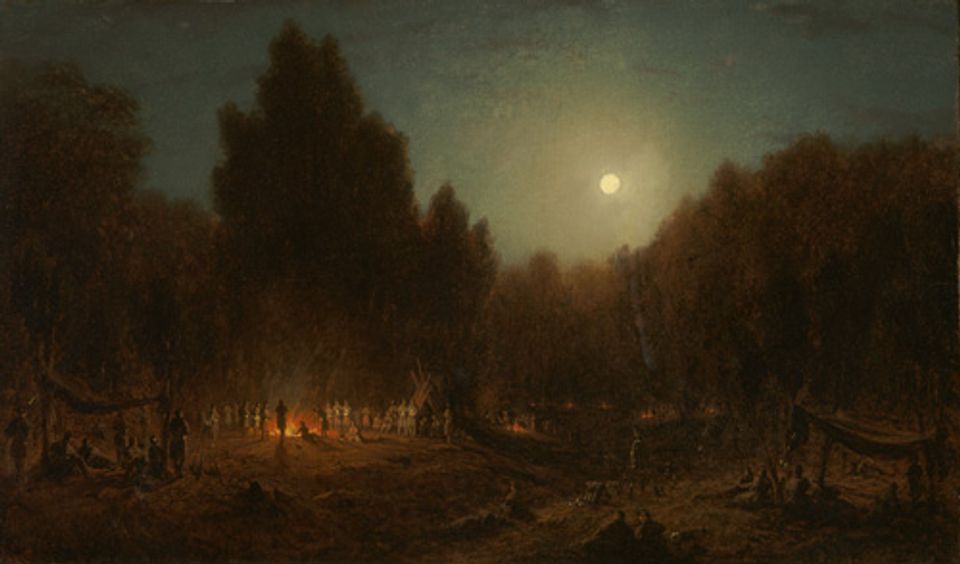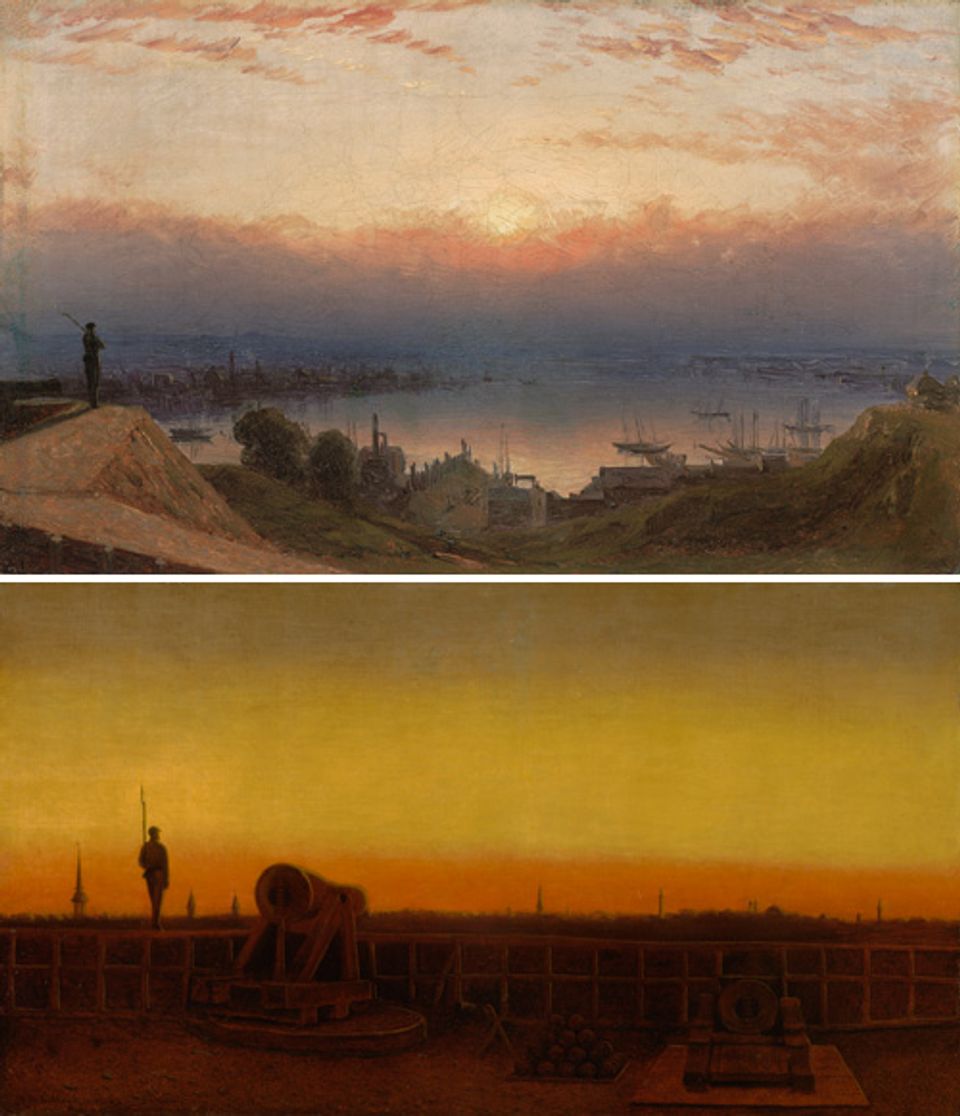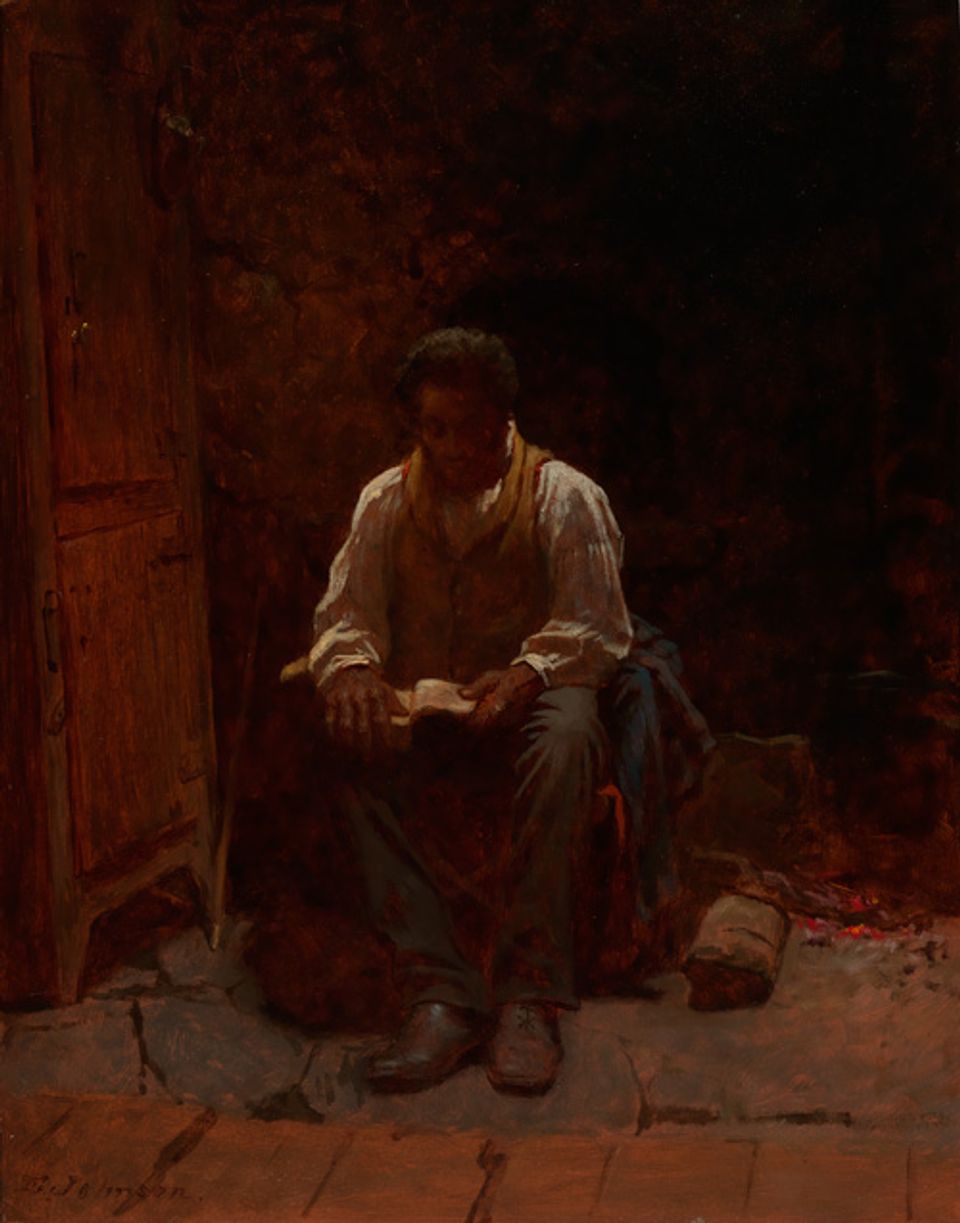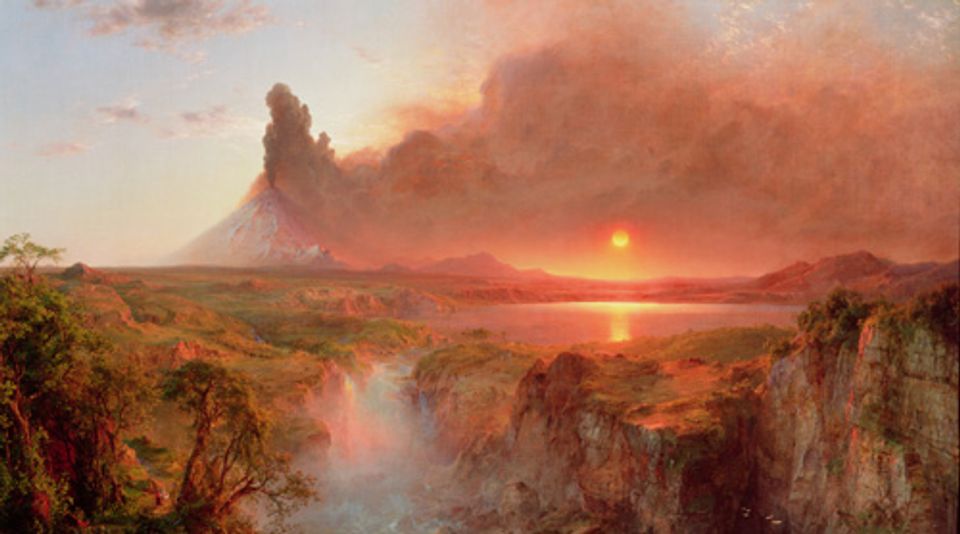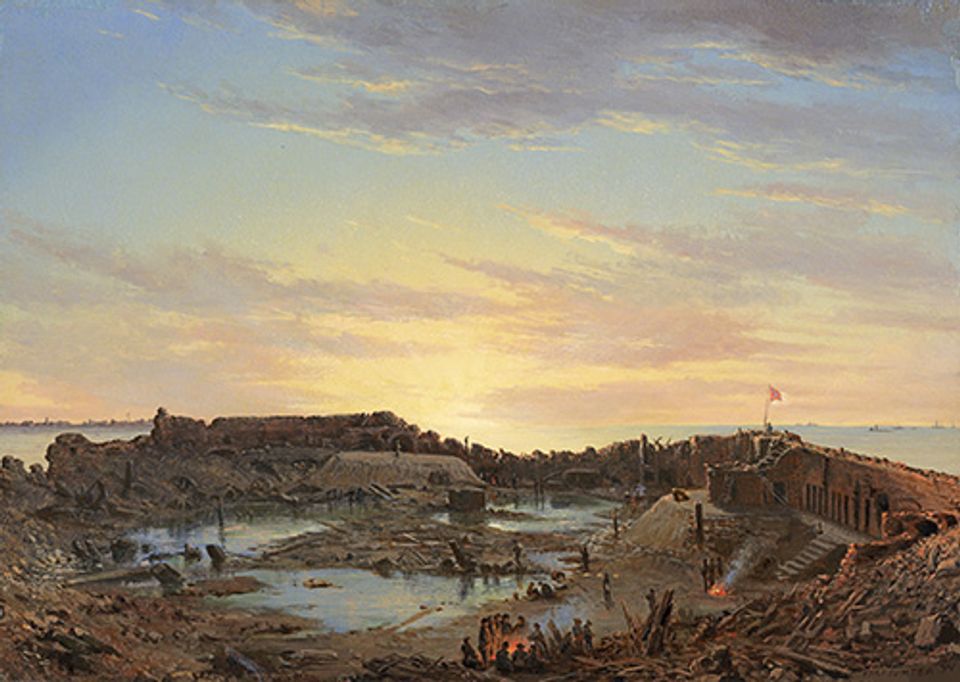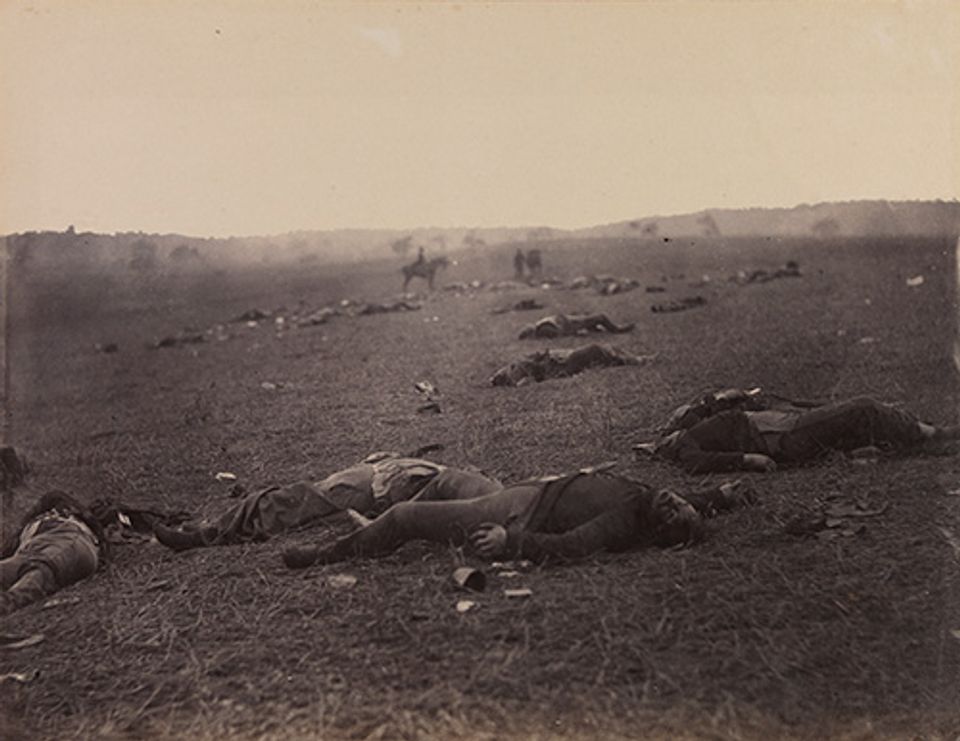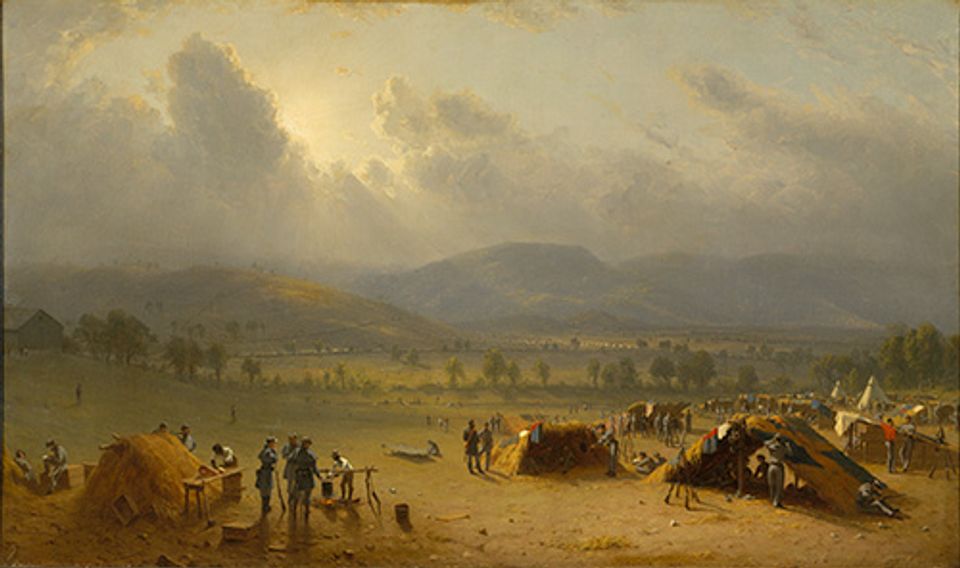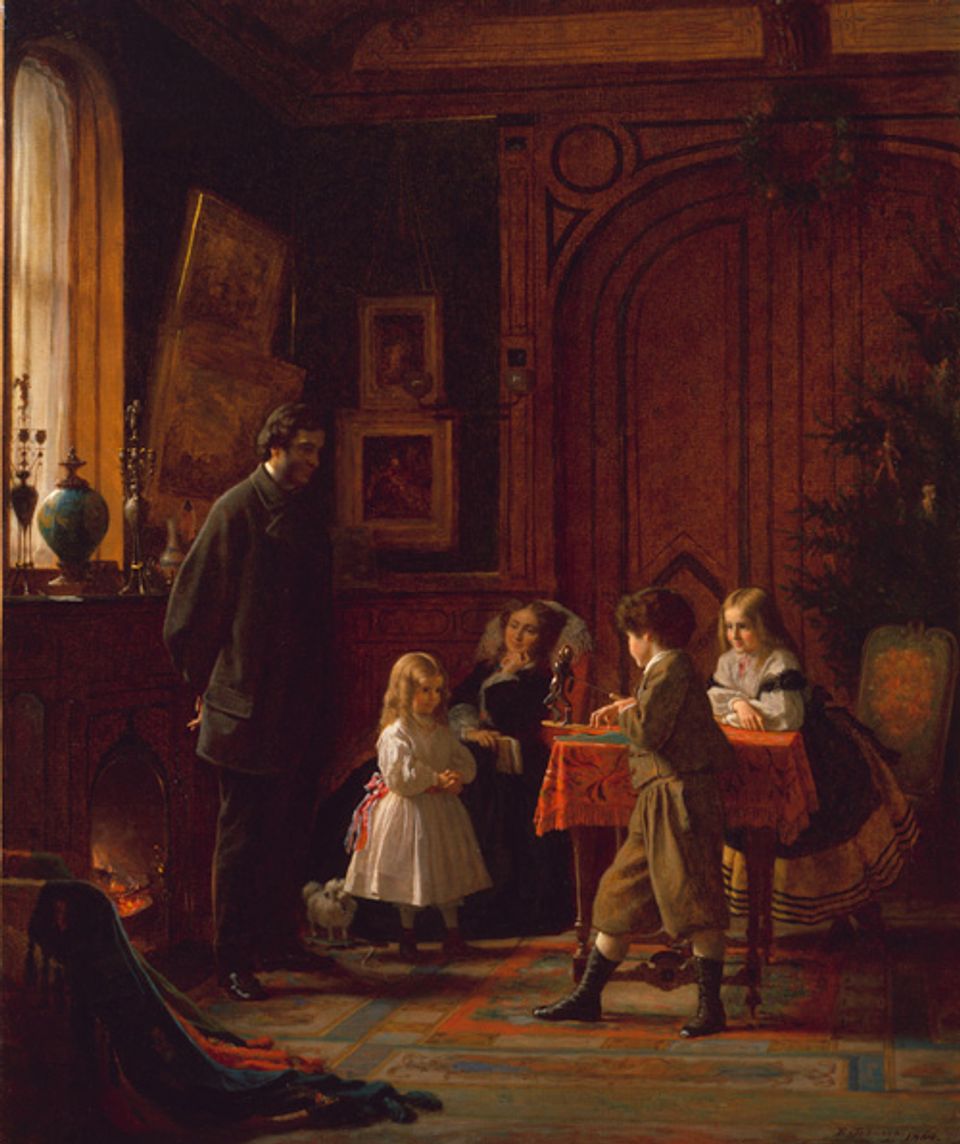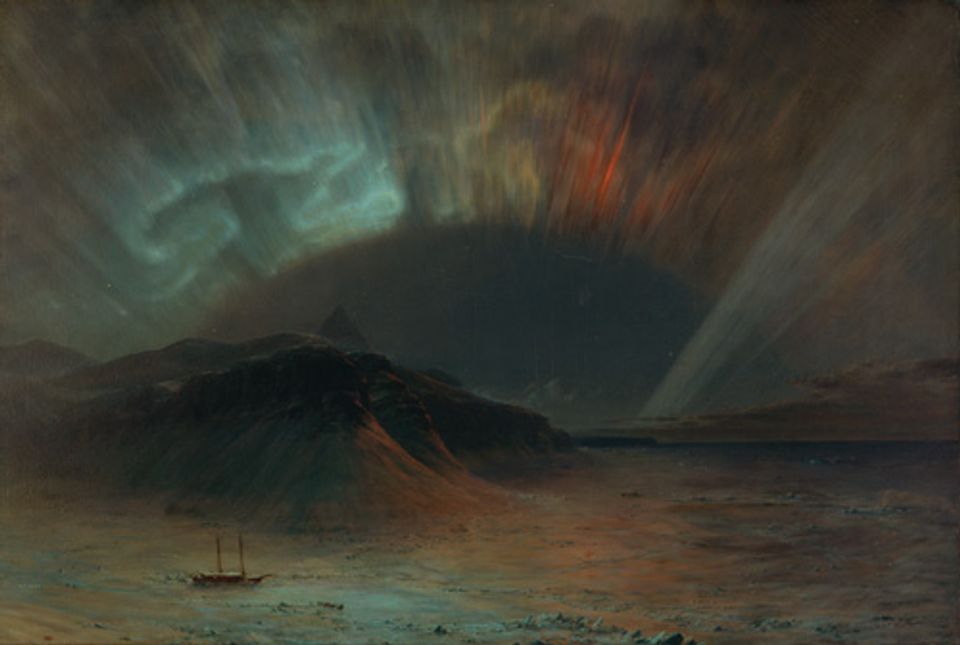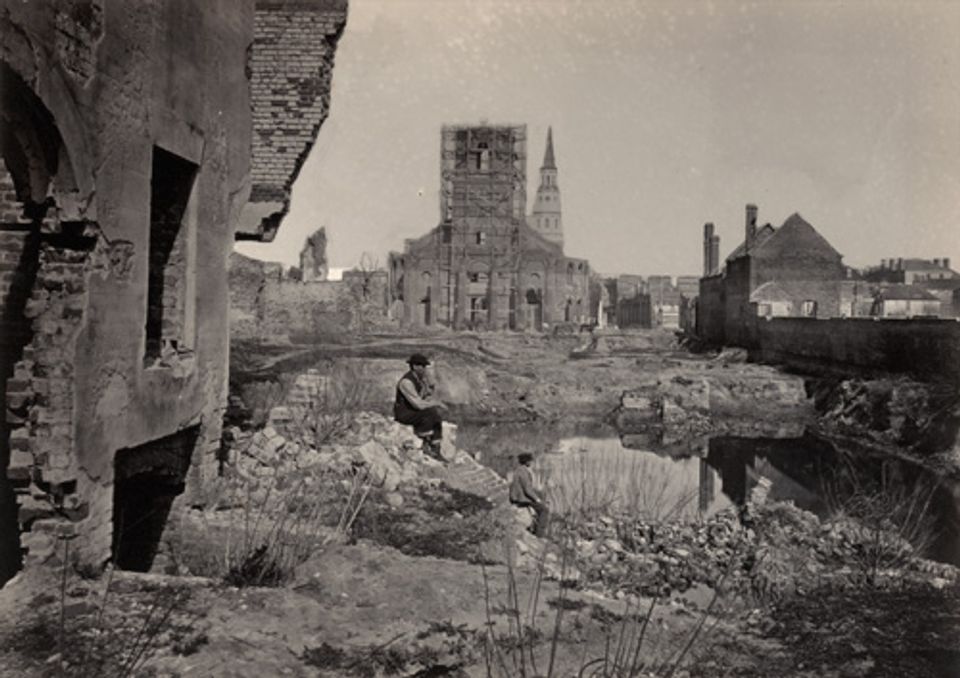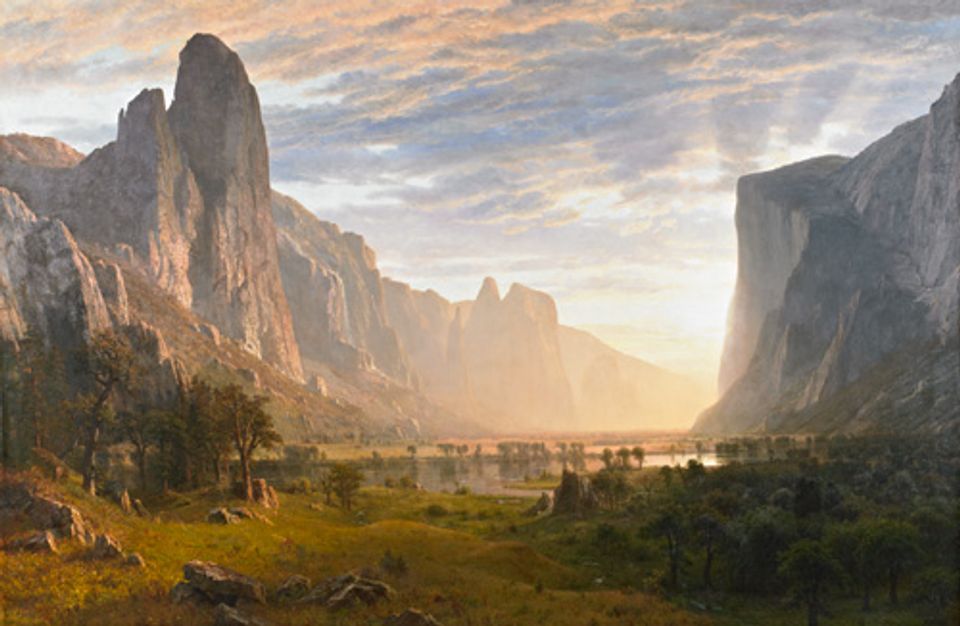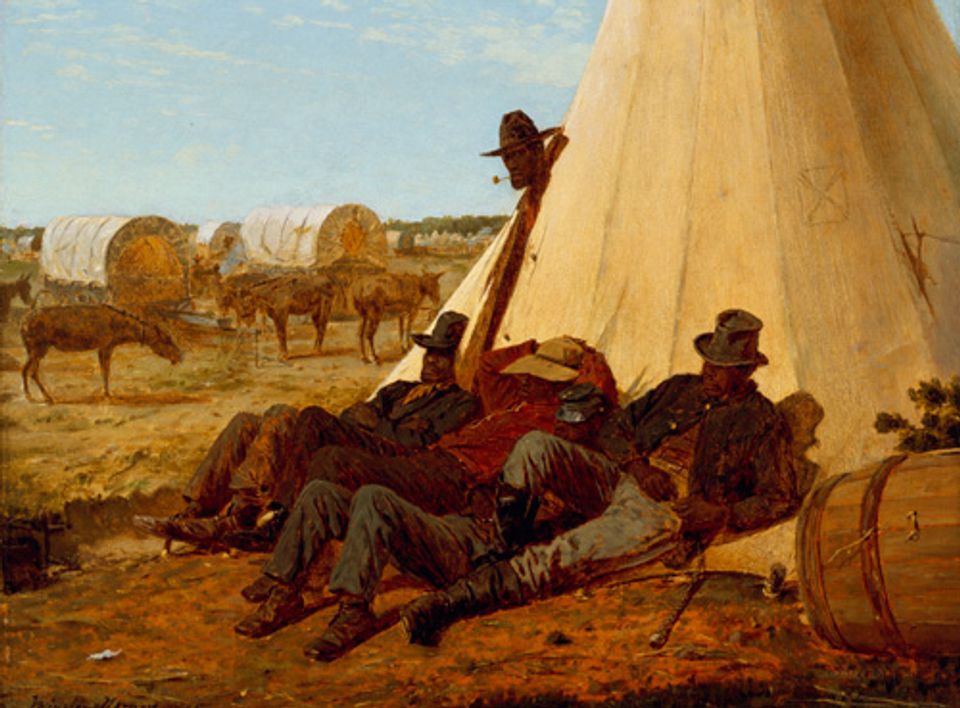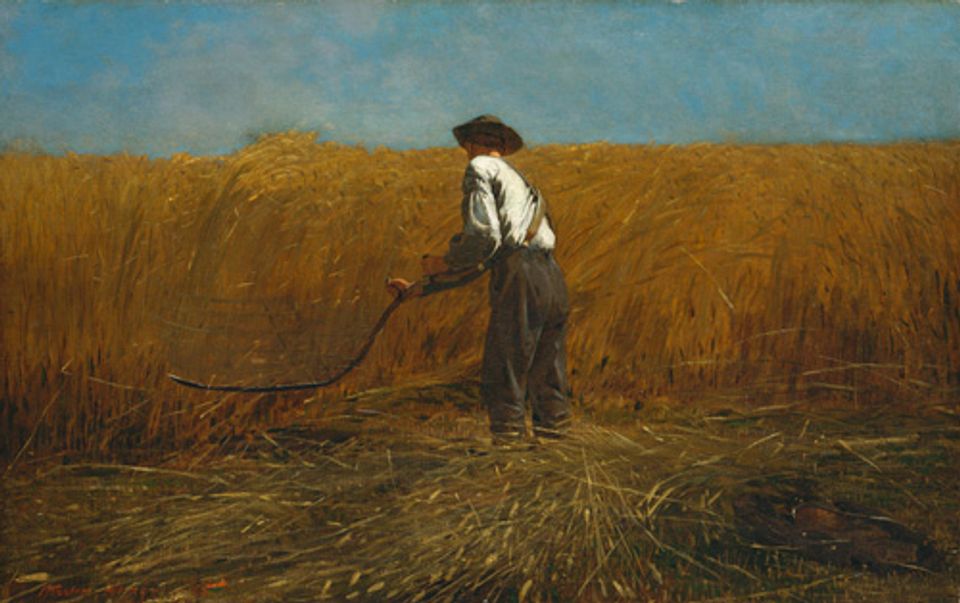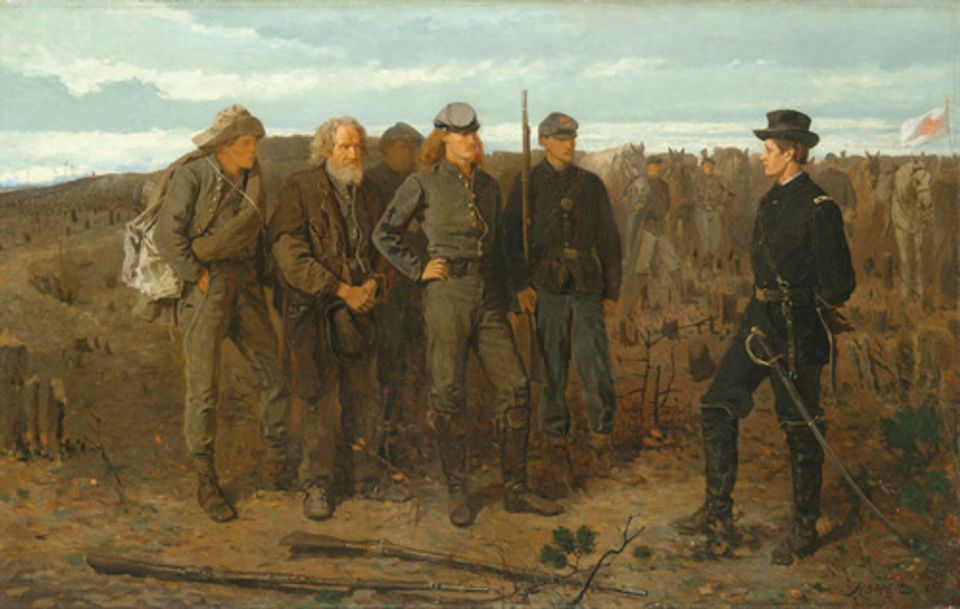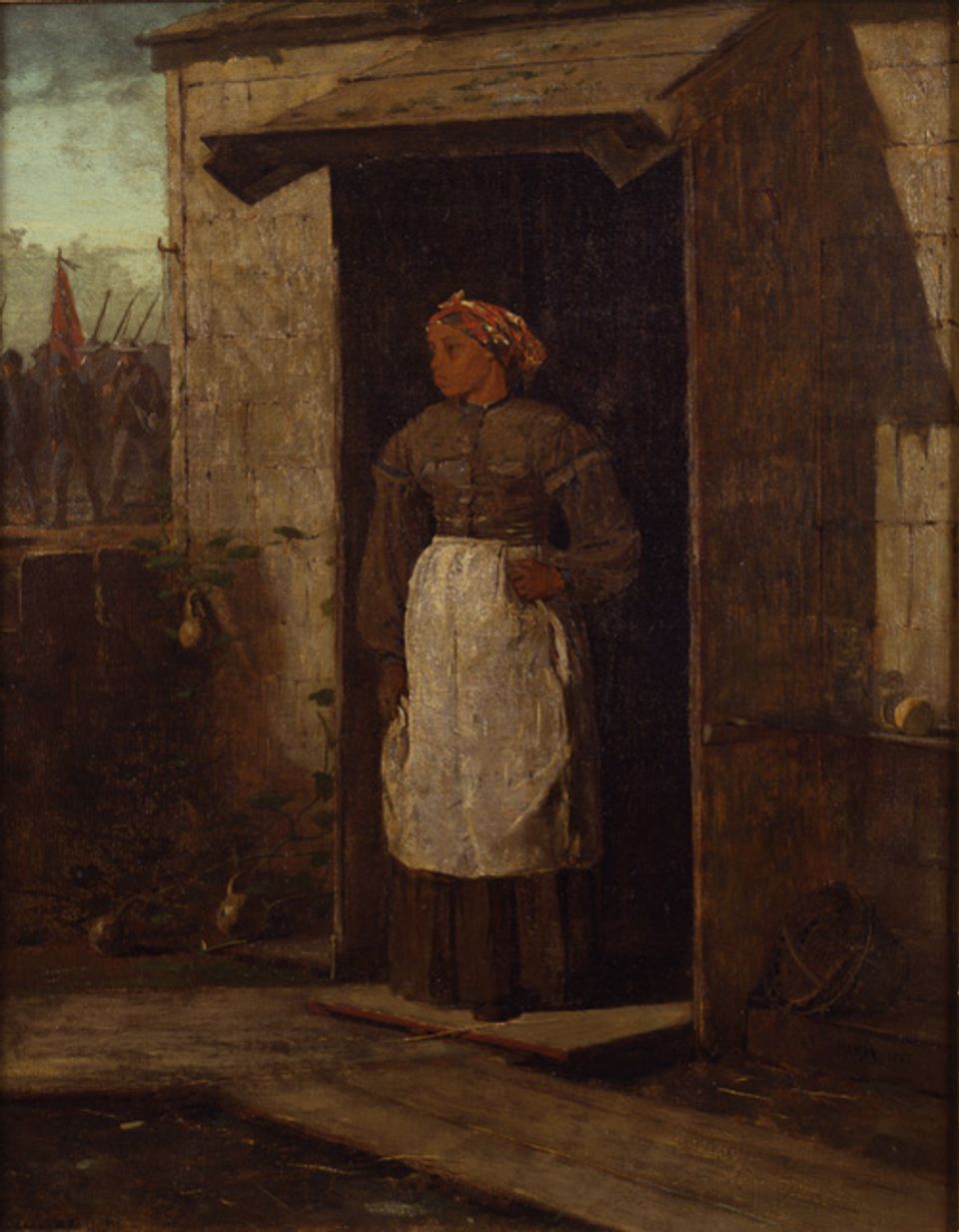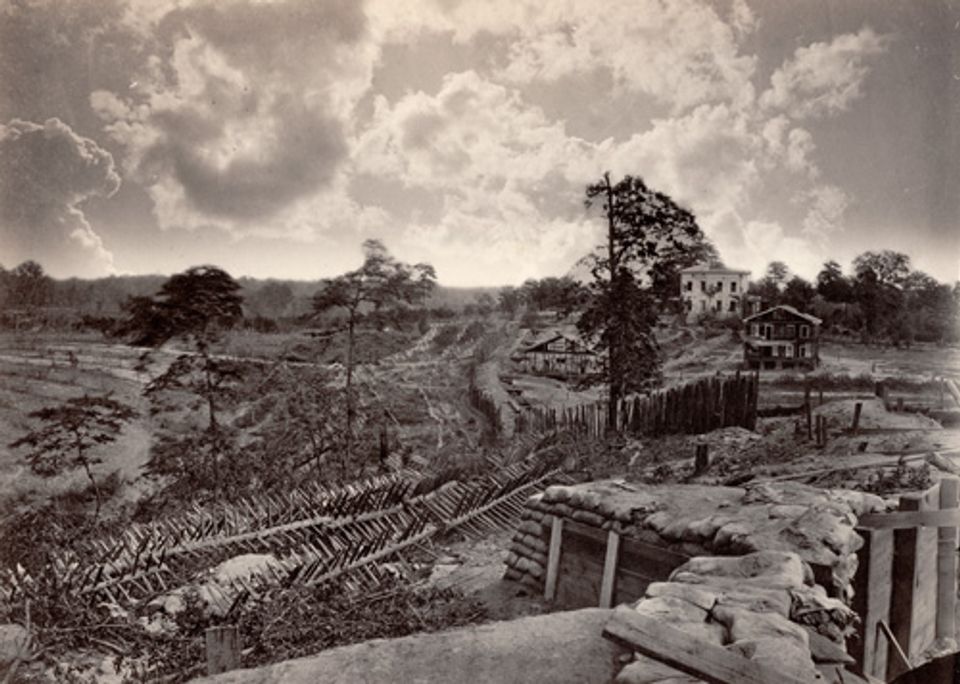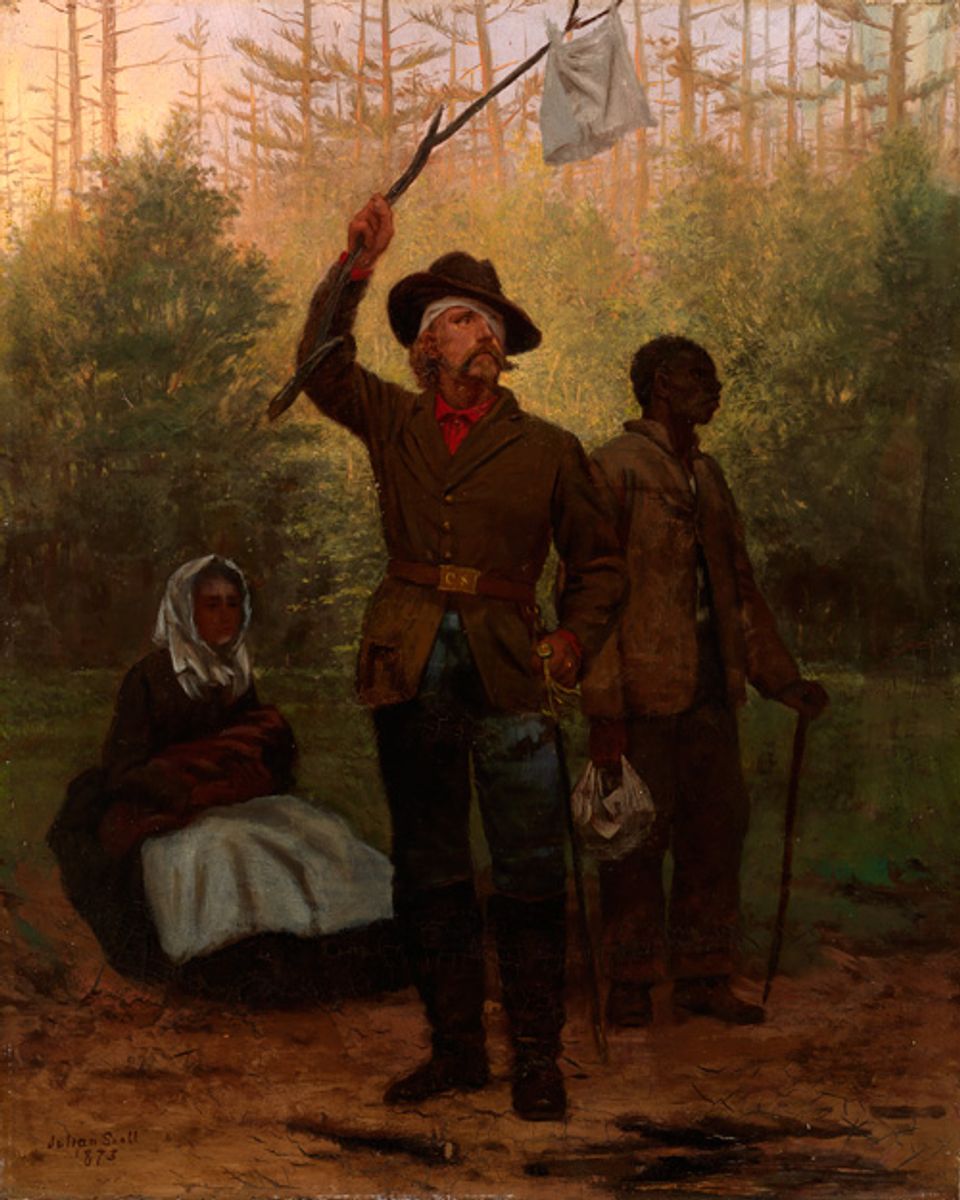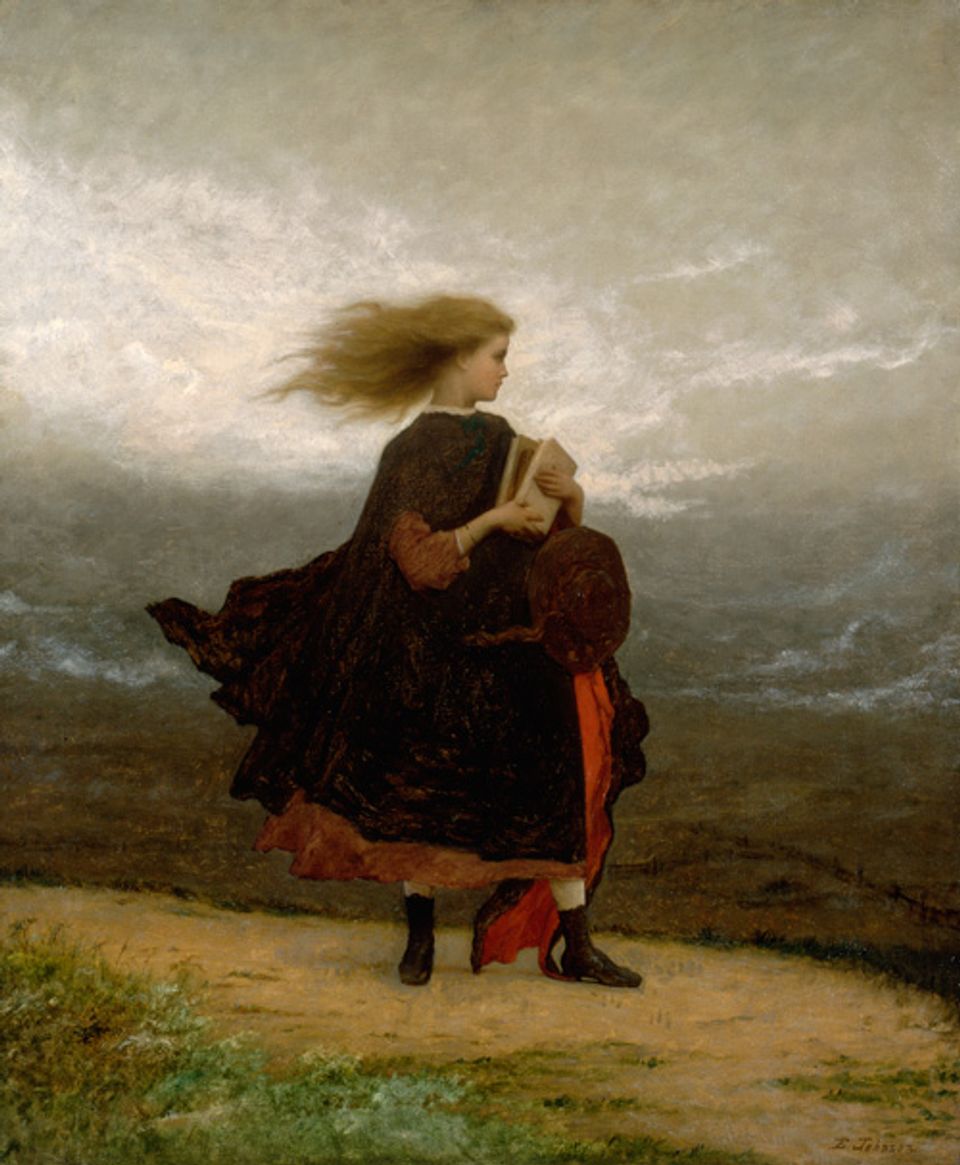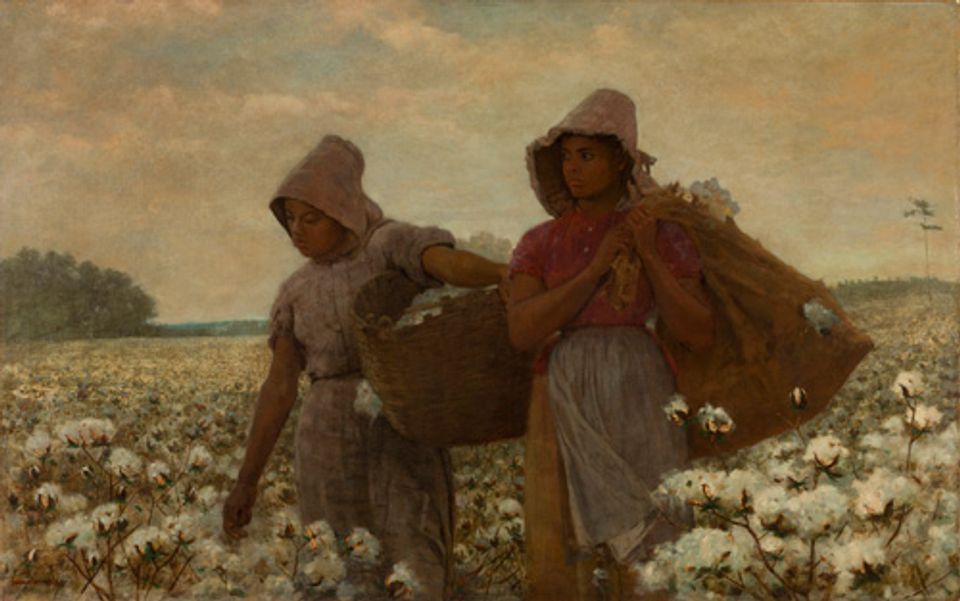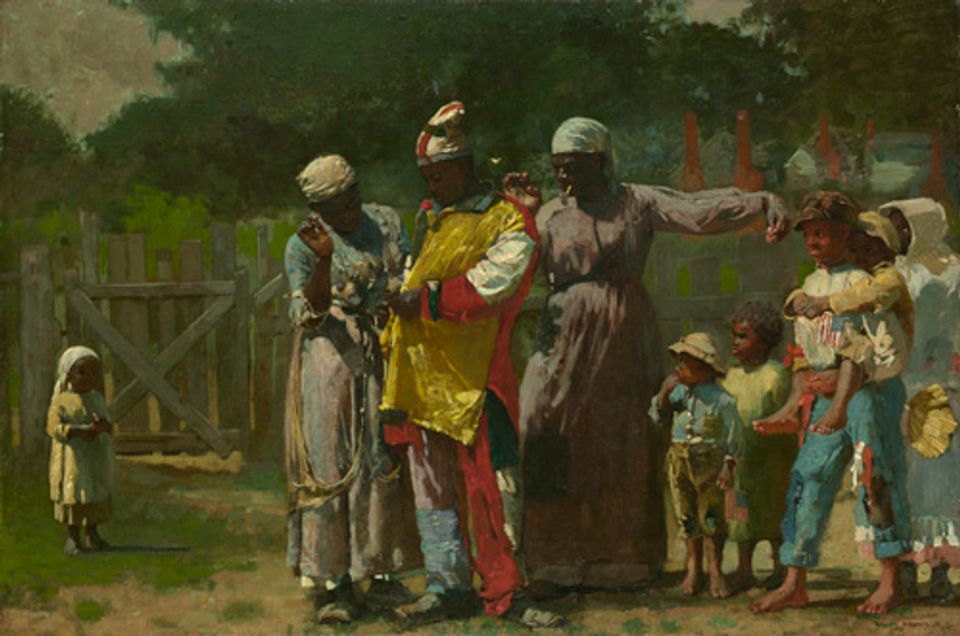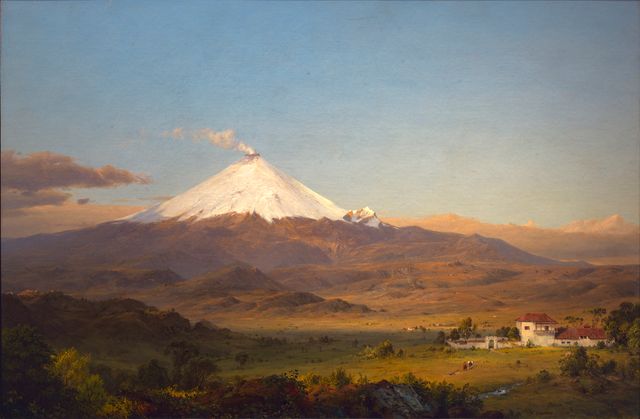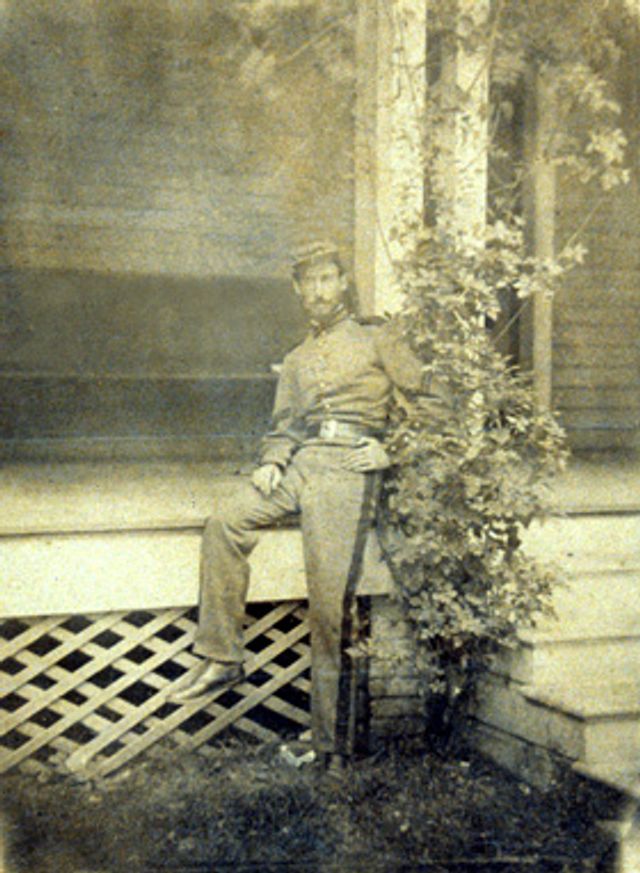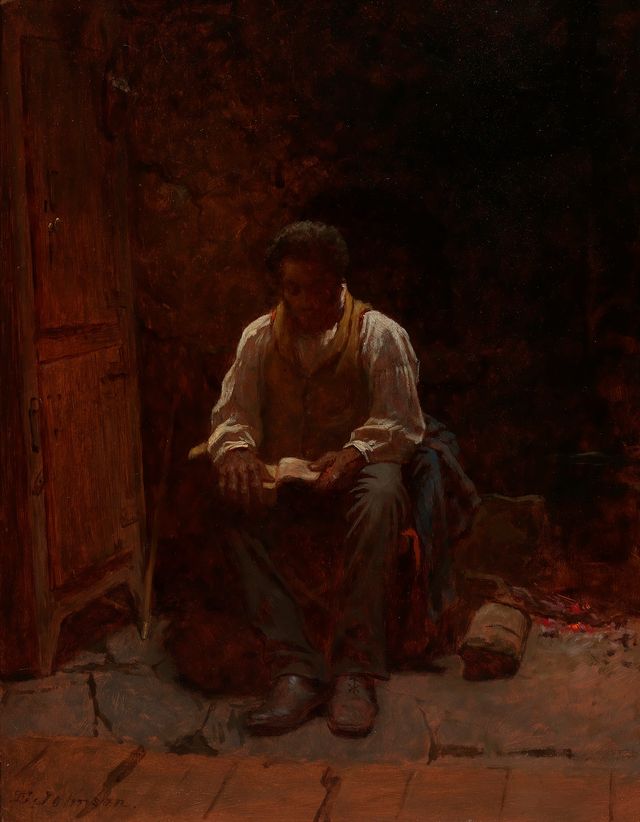The Civil War and American Art
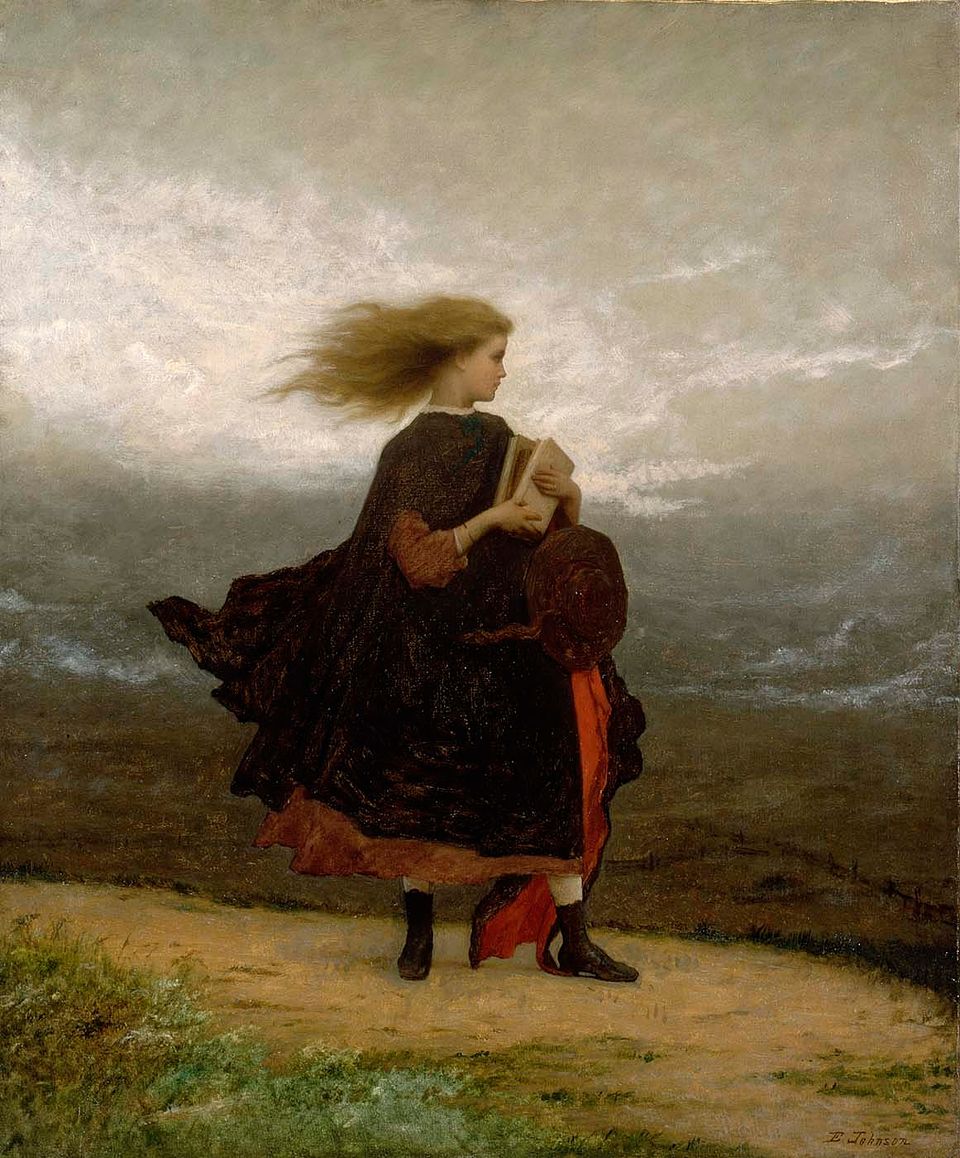
Eastman Johnson, The Girl I Left Behind Me, ca. 1872
The Civil War and American Art examines how America’s artists represented the impact of the Civil War and its aftermath. Winslow Homer, Eastman Johnson, Frederic Church, and Sanford Gifford—four of America’s finest artists of the era — anchor the exhibition. The exhibition follows the conflict from palpable unease on the eve of war, to heady optimism that it would be over with a single battle, to a growing realization that this conflict would not end quickly and a deepening awareness of issues surrounding emancipation and the need for reconciliation. Genre and landscape painting captured the transformative impact of the war, not traditional history painting.
Description
The Civil War and American Art includes 75 works—57 paintings and 18 vintage photographs. The artworks were chosen for their aesthetic power in conveying the intense emotions of the period. Homer and Johnson grappled directly with issues such as emancipation and reconciliation. Church and Gifford contended with the destruction of the idea that America was a “New Eden.” Most of the artworks in the exhibition were made during the war, when it was unclear how long it might last and which side would win.
The exhibition also includes battlefield photography, which carried the gruesome burden of documenting the carnage and destruction. The visceral and immediate impact of these images by Alexander Gardner, Timothy H. O’Sullivan, and George Barnard freed the fine arts to explore the deeper significance of the Civil War, rather than chronicle each battle.
Eleanor Jones Harvey, senior curator, organized the exhibition.
Visiting Information
Tour Schedule
Publications
Videos
Credit
The Civil War and American Art is organized by the Smithsonian American Art Museum with generous support from the Anschutz Foundation; Ludmila and Conrad Cafritz; Christie’s; Sheila Duignan and Mike Wilkins; Tania and Tom Evans; Norma Lee and Morton Funger; Dorothy Tapper Goldman; Raymond J. and Margaret Horowitz Endowment; Mr. and Mrs. Raymond J. Horowitz Foundation for the Arts; Wolf Kahn and Emily Mason Foundation; Joffa and Bill Kerr; Thelma and Melvin Lenkin; Henry Luce Foundation; Paula and Peter Lunder; Margery and Edgar Masinter; Barbro and Bernard Osher; Walter and Lucille Rubin Foundation; Patricia Rubin and Ted Slavin; Holly and Nick Ruffin. The C.F. Foundation in Atlanta supports the museum's traveling exhibition program, Treasures to Go. This exhibition is supported by an indemnity from the Federal Council on the Arts and the Humanities.
Artists
Church and Thomas Cole, the two most esteemed painters of the Hudson River school, were associated from 1844 to 1846 as pupil and master.
A major Hudson River school painter with extensive European experience, Gifford traveled west several times. In 1870 he joined F. V. Hayden's geological survey to Wyoming, leaving his two artist-companions, John F.
Painter and graphic artist. Homer's illustrations of the Civil War for Harper's Weekly are singular and outstanding examples of wartime reporting.














